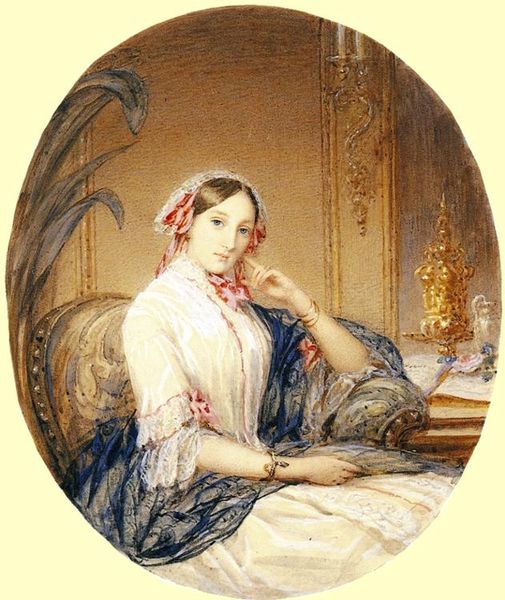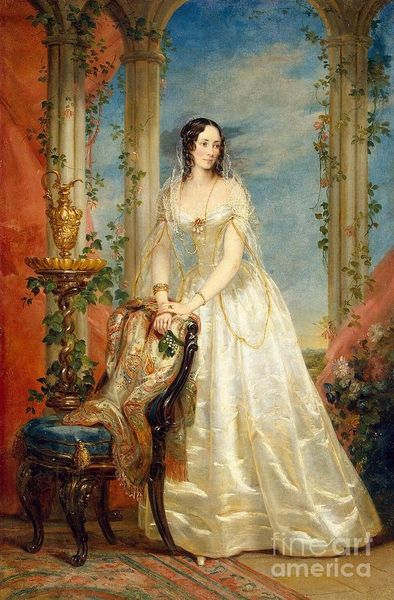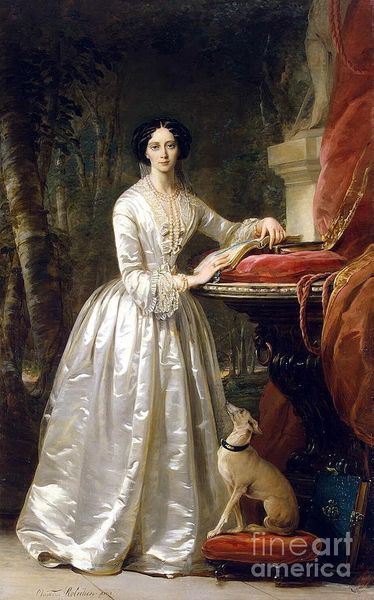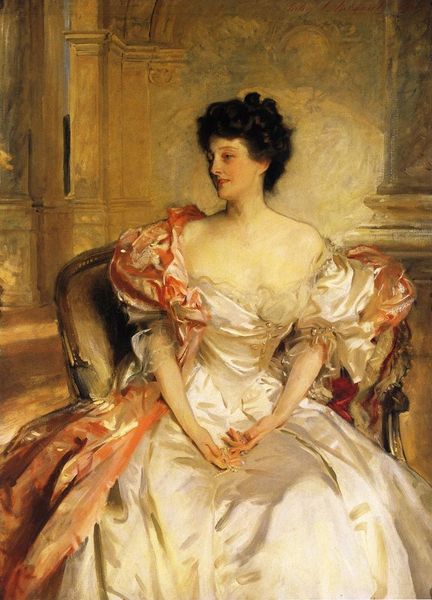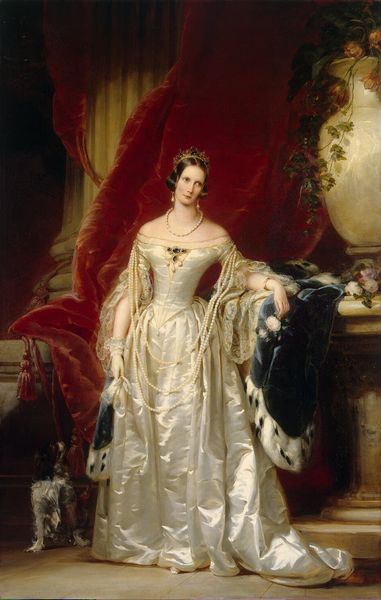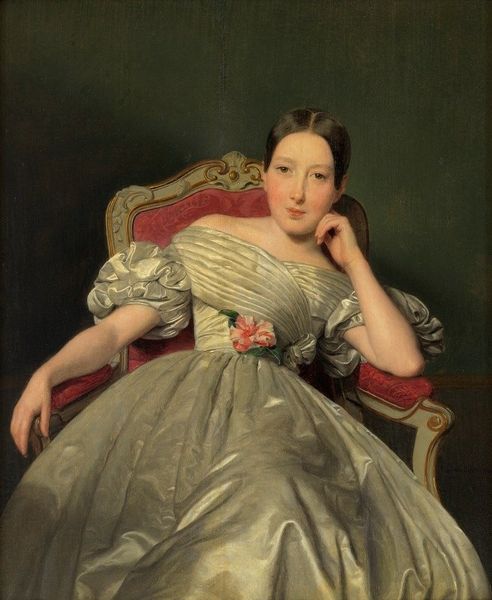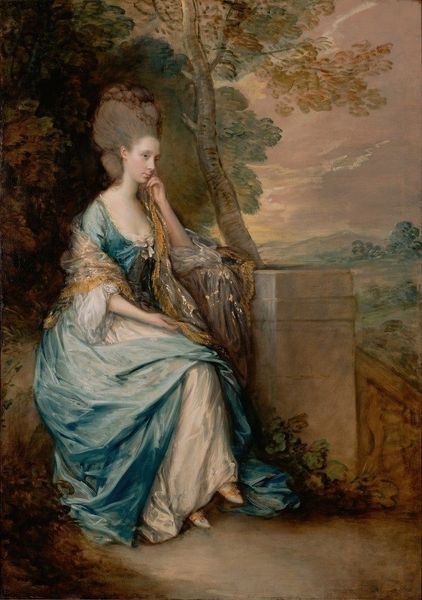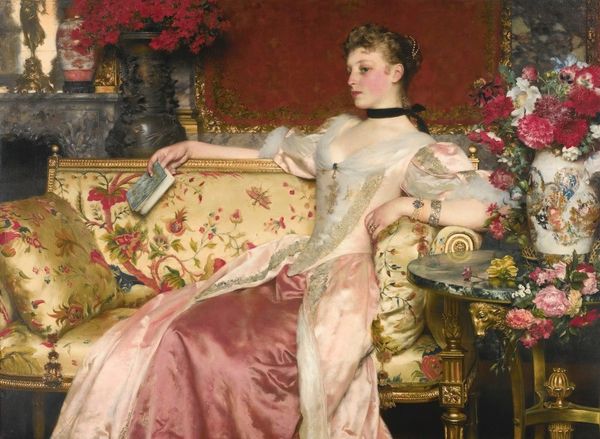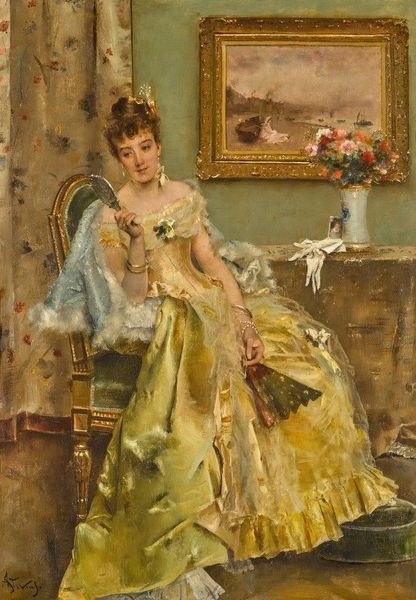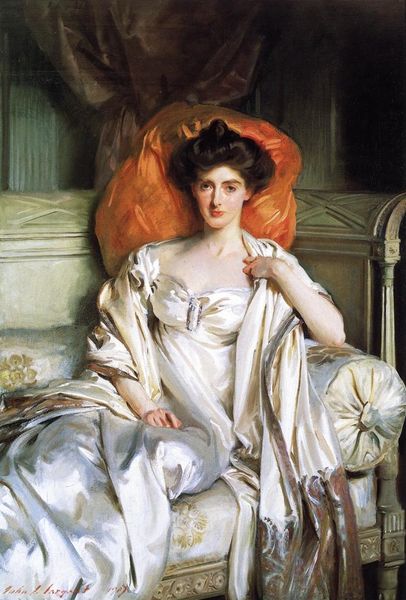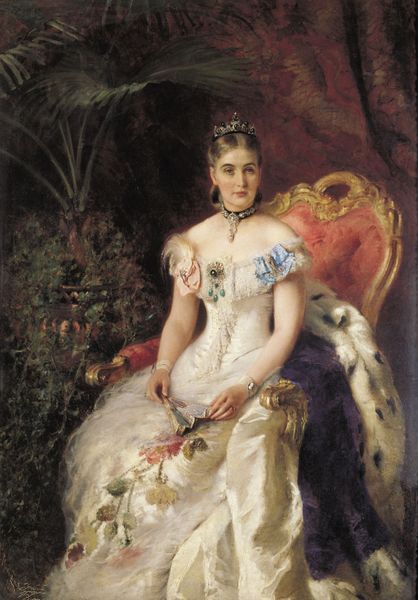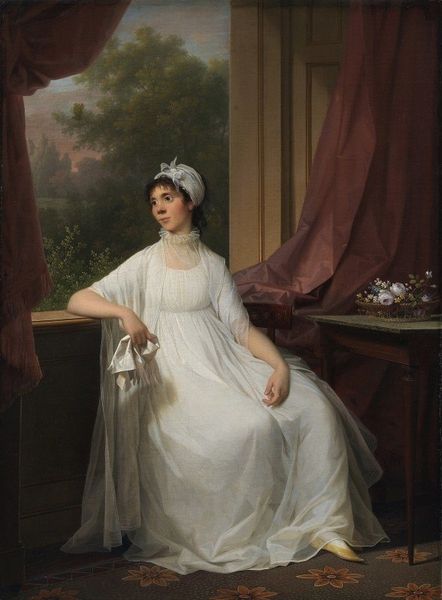
gouache, watercolor
#
portrait
#
gouache
#
gouache
#
figuration
#
watercolor
#
romanticism
#
watercolour illustration
#
genre-painting
#
miniature
Dimensions: 34.2 x 24.6 cm
Copyright: Public domain
Curator: This is Christina Robertson’s rendering of Grand Duchess Maria Alexandrovna, composed around 1850. It currently resides in the Hermitage Museum. Editor: It's lovely. The composition is very soft, very feminine. I notice how light plays on the gauzy fabric of her gown. The subdued colors— predominantly pale hues— create a rather demure and graceful atmosphere, almost wistful. Curator: Indeed. Robertson was a sought-after portraitist, especially known for her ability to capture likeness and social standing within the conventions of Romanticism. One might view this artwork within the socio-political context of the Russian court, understanding portraiture as a display of power and lineage. Editor: Precisely! This artwork subtly emphasizes the Grand Duchess's position. Although the overall palette is light, the detail— the subtle rendering of the hair, the embroidery on her dress— speaks to the elevated skill used. Notice the strategic placement of elements to signal wealth and influence. The Italian greyhound at her side as a fashionable, if silent, witness, Curator: And consider the arrangement of space, creating an intimate but carefully composed domestic setting. A dialogue is present between subject, pet, setting. It signals privilege. Semiotically speaking, each aspect operates as signifier, constructing a portrait of nobility and controlled femininity. Editor: A counterpoint, perhaps, is that the almost fragile delicacy of the watercolour and gouache evokes a fleeting moment in time, a fragile impression of beauty and power. It stands as both assertion and something surprisingly transient. What do you make of it overall? Curator: The image’s effectiveness comes down to a synthesis. Robertson harnesses formal techniques to serve ideology; a negotiation of representation and reality, reflecting societal norms and expectations of the time. It prompts considerations on visual representation and social power, even today. Editor: For me, ultimately, its impact rests in how delicately it’s handled; that sense of capturing a moment—something of ephemeral beauty and a quiet reflection that transcends even the context.
Comments
No comments
Be the first to comment and join the conversation on the ultimate creative platform.
